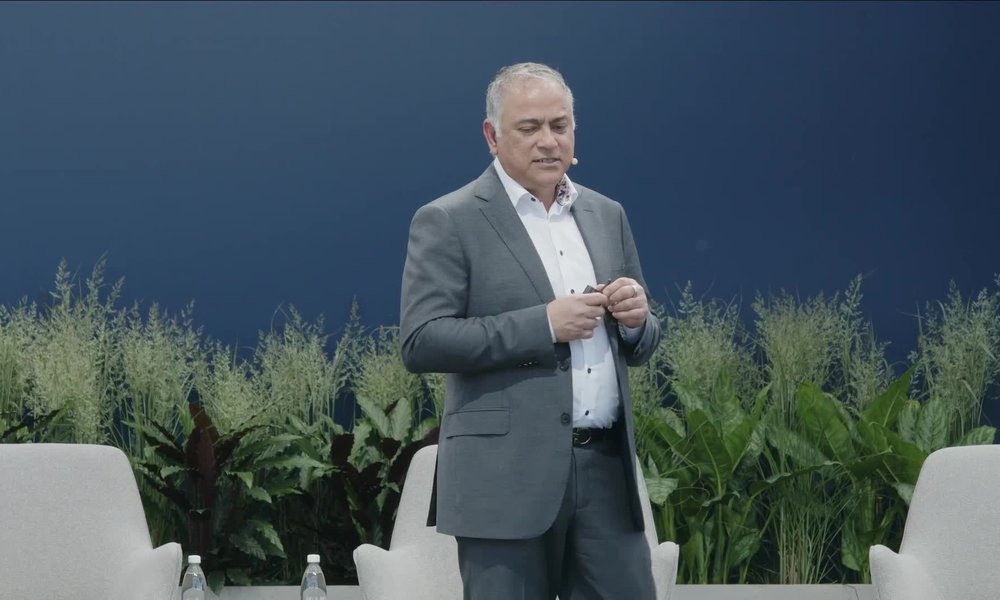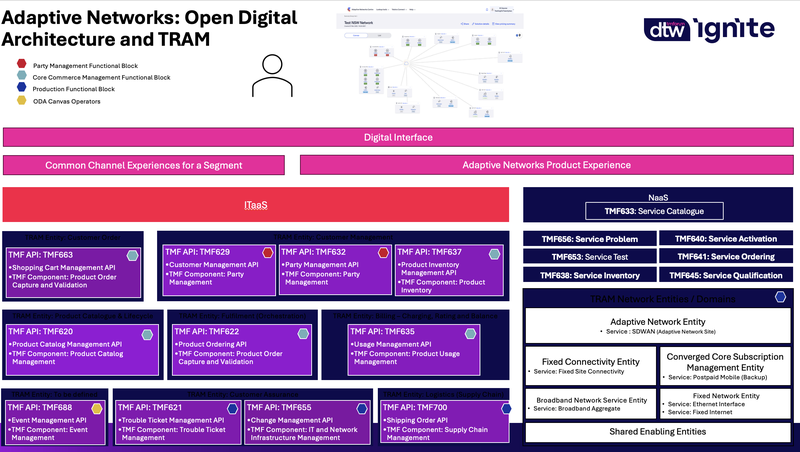Telstra’s Shailin Sehgal, Group Executive, Global Networks and Technology, believes his company is on the cusp of being able to scale autonomous networks powered by agentic AI. In an exclusive interview he explained why extending TM Forum’s Open Digital Architecture (ODA) to the network is critical to realizing that vision.

Telstra’s autonomous network vision is built on ODA
Telstra has been radically transforming its business since 2018 when the company launched its T22 strategy to simplify product offerings and digitize customer experience and internal systems. When T22 was nearing completion, Telstra launched the T25 strategy to shift focus toward growth and innovation. A major result was the creation of the Telstra Reference Architecture Model, or TRAM, which is based on ODA and uses an API-first approach to delivering composable network and technology services.
Building on T22 and T25, Telstra launched its latest five-year strategy, Connected Future 30, in May. It includes a major investment in national infrastructure to support the growing demands of AI workloads, development of autonomous networks based on user intent, and creation of personalized customer experiences that leverage predictive analytics and data.
During his DTW keynote, Sehgal described AI agents embedded in autonomous networks as “modular tools that reason and take on specific tasks. They are narrow in focus: One agent can do maintenance; one can do optimization; another can do resource management and support. They coexist, collaborating with each other and within the network ecosystem”.
“We are not there yet,” he added. “We need to define an architecture and deployment pattern for designing and scaling these agents. We must assure that the agentic AI reasoning – as it acts on user intent – is accurate, explainable and predictable and hence secure for all agents to work and act autonomously.”
Accomplishing this will require industry collaboration at the network level, and Sehgal thinks it should happen within the ODA. He said he would like to see more participation in TM Forum from CTOs and network engineers to develop the necessary standards for ODA network components.
“You do not want this agentic framework to just be in the business and application layers. You need to bring it down into the network and infrastructure layers,” said Sehgal.
It’s essential to help network teams feel more at ease with the innovation that is happening in OSS/BSS, Sehgal added, because if the network remains isolated, all the progress telcos have made with ODA will stay confined to the OSS/BSS layer. “We need to ensure that business agents and network agents continue to have balanced tension so that the business intent agent does not override or record the network orchestration agent,” he explained.
The current human-centric approach to managing network infrastructure is grounded in telcos’ mandate to provide highly reliable and resilient networks. “[Network teams] are held responsible for making sure that the network never goes down and always has enough capacity,” said Sehgal.
Telstra bridges the gap between network teams and other teams within the organization by ensuring there’s a common architecture – TRAM – across product, channel and network experiences. “Having this common architecture means we can bring all the benefits of Open Digital Architecture into the network side.”
The approach is paying off for Telstra. At DTW, the company won a TM Forum Excellence Award in customer experience for its new Adaptive Networks Product Experience (PEX), which provides powerful, canvas-like tools to enterprise customers. The tools enable “inversion of control”, allowing users to design, configure, implement and change their network solutions through real-time visualization and intuitive drag-and-drop interfaces.
“Sitting behind [PEX] is IT-as-a-service, the IT APIs to support that. And sitting behind that is the network APIs,” Sanders explained during a presentation at DTW. “To bring it to life we’ve used over 20 TMF Open APIs, 15 ODA components and six network domains in the infrastructure. This is the Open Digital Architecture – live, at scale.”

Next steps for Telstra include a new version of the TRAM maturity model – the company has gone through six iterations so far. The next will “bring in the ability for each of these TRAM entities to have an agentic AI interface into them,” said Sehgal.
Sanders provided some details about the future of TRAM in his presentation, noting that in Telstra’s view, composable architecture in the AI era requires anchoring in “knowledge”. “We need to move from simply modeling data to modeling the relationships between those data sets,” Sanders explained. “We need to consider ontologies and knowledge-based services.”
Indeed, Telstra won an Excellence Award last year for its groundbreaking approach to autonomous networks using an in-house knowledge graph and “Knowledge Plane”. By using ODA, Open APIs, and TM Forum’s best practices for deploying network-as-a-service (NaaS) and digital twins, Telstra invented a new way to model relationships between network components and encode knowledge, allowing the company to move beyond scripted network service automation to an intent-driven approach.
“Agentic is about reasoning and then acting,” Sanders said, highlighting the need to add what he calls an “Act” interface to all TRAM components.
Going forward, Sehgal and Sanders believe that the telecoms industry needs to figure out how to develop what Sanders calls “semantic interoperability” to enable intent-based agentic AI across networks.
“We need to consider and expand ODA’s composable models into the network; we need to model the network,” said Sanders. “We need to understand how agents can interact with that and solve for things like conflict management.”
He added: “We need to extend ODA for agentic interfaces – MCP [model context protocol], A2A [agent-to-agent], or something similar. But it must be an abstracted, published interface. And we need to consider, what those patterns of integration are to rapidly enable us to do this at scale.” (See this article for more discussion among CSPs about the need for collaboration between AI agents.)
Sehgal imagines one way to do that would be to allow AI agents to figure out for themselves the best way to fulfill a desired intent. “Let the water flow through, and it’ll land,” he explained. “That’s one way of thinking about it, where the agents themselves are learning and improving on the protocol.”